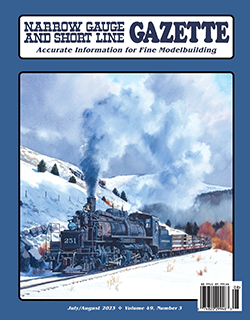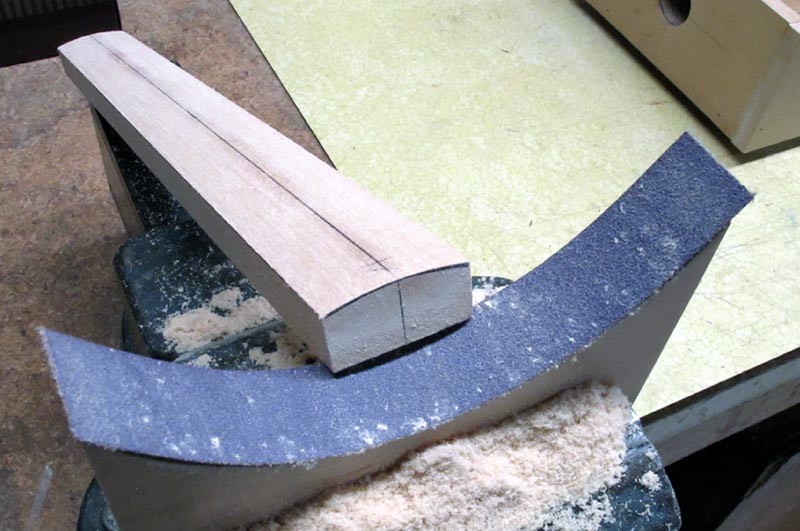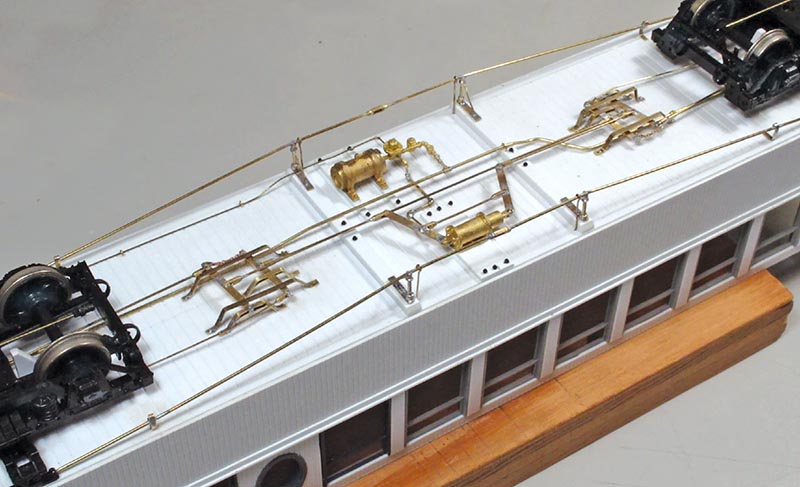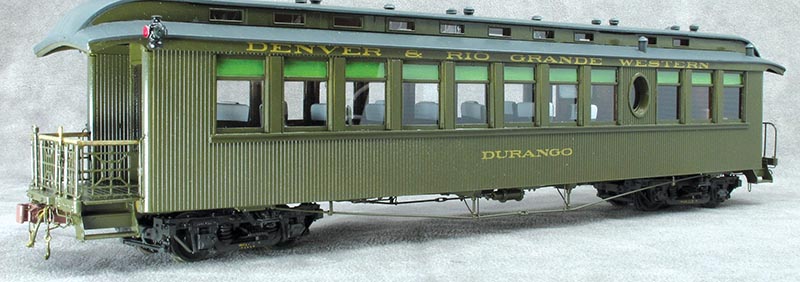 by Dave Adams/photos by the author
by Dave Adams/photos by the author
In 2002, my friend Dave Clune, builder of the On3 Cascade County Narrow Gauge was visiting my On3 Durlin Branch and I lamented that I really needed to build passenger cars for the Colorado & New Mexico Express before a bunch of folks showed up for operating sessions in 2003. Dave commented that he needed to practice building passenger equipment before he built more for his railroad. Dave returned home with four Crossing Gate kits.
In 2003, Dave and Chris Clune returned to help host my operating sessions and brought with them four gorgeous assembled D&RGW Crossing Gate passenger cars built to reflect the cars prior to their modernization in 1936 and 1937, and with much more detail than provided in the kits. They were immediately pressed into service for the op sessions, with the combine serving on the Flint mixed and the postal, baggage and coach making up most of the Colorado & New Mexico Express. Another platform coach I built previously was pressed into temporary service on that train to bring up the rear rather than a parlor car or chair car.

ABOVE: This roof pattern was used to shape the roof for vacuum forming.
Decisions
In 2019, I decided that 16 years of temporary coach service as the tail end car needed to be ended, and a search for an appropriate car to model started. I really wanted a parlor car with an observation platform recessed back into the car body, a fancy railing on the rear end. I consulted Herbert Danneman’s A Ticket to Ride the Narrow Gauge and Rio Grande Narrow Gauge Varnish, and the second parlor car named Durango fit my criteria. The later book includes two photos of the 2nd Durango, an overall exterior view and an interior view taken before the 1937 rebuild into the parlor car Gunnison for use on the Shavano.
Study of photos of the Gunnison showed they could be used as reference photos for those details not changed in the modernization program. Searching magazine indices did not turn up any drawings of the 2nd Durango, but I did find a folio sheet from 1904 for parlor cars Almosa, Durango, and Silverton in the BHI Publication’s Rio Grande & Rio Grande Southern Passenger, Business, & Special Cars of the 20th Century, and the Danneman book contained an updated folio sheet covering the Gunnison and Salida parlor cars.

ABOVE: This underbody detail really sets off the model.
Building the Car
I decided the car would be built from Evergreen styrene and Grandt Line parts, and the general construction of the bodies would be as outlined in Crossing Gate kit instructions, which included a materials list. Once the Grandt Line parlor car windows, corner posts and an end door roof arch castings were in hand, I sat down and drew up the under-frame, car side view and an end view in ¼-inch scale. Once I was happy with the window layout on the car sides, including the oval window shown on the folio sheet for the lady’s water closet, I was ready to start building even though I had no idea where the bullnose clearstory roof would come from.
My friend, Dave Grandt, sent me some images of a wreck on the RGS in 1912, noting the parlor car in that wreck was the 1st named parlor car Alamosa which was a sister of the Durango as stated on the 1904 folio sheet. Those photos showed the underside of the car was sheathed, and I assumed the Durango would be sheathed as well, and the sheathing then maintained through the years. I do not know if the sheathing went over the side sills or ran between the side sills, but I decided to reduce the height of center and intermediate sills by 0.02″ and fit 0.020″ scribed styrene between the side sills..



